Document Author
Year Published
- 2015 (26) Apply 2015 filter
- 2016 (13) Apply 2016 filter
- 2013 (7) Apply 2013 filter
- 2005 (5) Apply 2005 filter
- 2020 (5) Apply 2020 filter
- 2006 (4) Apply 2006 filter
- 2007 (4) Apply 2007 filter
- 2008 (4) Apply 2008 filter
- 2010 (4) Apply 2010 filter
- 2012 (4) Apply 2012 filter
- 2014 (4) Apply 2014 filter
- 2017 (4) Apply 2017 filter
- 2019 (4) Apply 2019 filter
- 2021 (4) Apply 2021 filter
- 2011 (3) Apply 2011 filter
- 2000 (2) Apply 2000 filter
- 2018 (2) Apply 2018 filter
- 1995 (1) Apply 1995 filter
- 2002 (1) Apply 2002 filter
- 2014; 2017 (1) Apply 2014; 2017 filter
- Carol Lee Smith (1) Apply Carol Lee Smith filter
- George Thomson (1) Apply George Thomson filter
- Julie Lassonde (1) Apply Julie Lassonde filter
- Julie Mathews (1) Apply Julie Mathews filter
- Karen Cohl (1) Apply Karen Cohl filter
- Law Foundation of Ontario (1) Apply Law Foundation of Ontario filter
Topic
- (-) Remove Self-Help Centers filter Self-Help Centers
- Trial Court Self-Help (90) Apply Trial Court Self-Help filter
- 100% Access to Justice (69) Apply 100% Access to Justice filter
- Research (45) Apply Research filter
- Reports, Evaluations, Best Practices, Surveys (42) Apply Reports, Evaluations, Best Practices, Surveys filter
- Linking a Self-Help Center to Other Services (38) Apply Linking a Self-Help Center to Other Services filter
- Best Practices for Self-Help Centers (35) Apply Best Practices for Self-Help Centers filter
- Courts (27) Apply Courts filter
- Reports (24) Apply Reports filter
- Strategic Planning (24) Apply Strategic Planning filter
- Starting a Self-Help Center (18) Apply Starting a Self-Help Center filter
- Allied Professionals (17) Apply Allied Professionals filter
- Managing a Self-Help Center (15) Apply Managing a Self-Help Center filter
- Simplification (15) Apply Simplification filter
- Articles & SRLN Briefs (14) Apply Articles & SRLN Briefs filter
- Ethics Education (13) Apply Ethics Education filter
- Forms (13) Apply Forms filter
- Triage (12) Apply Triage filter
- Unbundling (11) Apply Unbundling filter
- Surveys (10) Apply Surveys filter
- Technology (10) Apply Technology filter
- Best Practices (9) Apply Best Practices filter
- Evaluation (9) Apply Evaluation filter
- Justice Tech Entrepreneurs (9) Apply Justice Tech Entrepreneurs filter
- Legal Aid (9) Apply Legal Aid filter
- Libraries (9) Apply Libraries filter
- Evaluating a Self-Help Center (8) Apply Evaluating a Self-Help Center filter
- Plain Language & LEP (8) Apply Plain Language & LEP filter
- Presentations (8) Apply Presentations filter
- Private Bar (8) Apply Private Bar filter
- Forms (7) Apply Forms filter
- Tools for Evaluating Self-Help Programs and Services (7) Apply Tools for Evaluating Self-Help Programs and Services filter
- Judges (6) Apply Judges filter
- Automated Forms & E-Filing (5) Apply Automated Forms & E-Filing filter
- Clerk, Self-Help Center Staff, and Librarian Ethics (5) Apply Clerk, Self-Help Center Staff, and Librarian Ethics filter
- Funding (5) Apply Funding filter
- Judicial Ethics (5) Apply Judicial Ethics filter
- Plain Language (5) Apply Plain Language filter
- Scaling in Court Systems (5) Apply Scaling in Court Systems filter
- Triage & Service Portal (5) Apply Triage & Service Portal filter
- Working Groups (5) Apply Working Groups filter
- Attorney Ethics (4) Apply Attorney Ethics filter
- Conferences & Summits (4) Apply Conferences & Summits filter
- Court Navigators (4) Apply Court Navigators filter
- Human Centered Design (4) Apply Human Centered Design filter
- Research about Court Navigators (4) Apply Research about Court Navigators filter
- Webinars (4) Apply Webinars filter
- ATJ Commissions (3) Apply ATJ Commissions filter
- Impact of Self-Represented Litigant Innovations on Cost and Efficiency (3) Apply Impact of Self-Represented Litigant Innovations on Cost and Efficiency filter
- LEP and Access (3) Apply LEP and Access filter
State
- California (20) Apply California filter
- Alaska (8) Apply Alaska filter
- New York (8) Apply New York filter
- Maryland (7) Apply Maryland filter
- Minnesota (3) Apply Minnesota filter
- Utah (3) Apply Utah filter
- Illinois (2) Apply Illinois filter
- Massachusetts (2) Apply Massachusetts filter
- Michigan (2) Apply Michigan filter
- Pennsylvania (2) Apply Pennsylvania filter
- Washington (2) Apply Washington filter
- Florida (1) Apply Florida filter
- Idaho (1) Apply Idaho filter
- Missouri (1) Apply Missouri filter
- Montana (1) Apply Montana filter
- South Carolina (1) Apply South Carolina filter
- Texas (1) Apply Texas filter
Region
Tags
Post date
Search results
Study: Self-Represented Litigants in Family Law Cases In Jackson County, Missouri (Cook 2007)
This study is unique because it included the self-represented in its survey. From the Abstract: This report is based on surveys that examined the attitudes and perceptions of judges, the family law bar, family court staff, and self-represented litigants r ...
Report: Resources to Assist Self-Represented Litigants: A Fifty State Review of the State of the Art (Greacen 2011)
This report was originally commissioned by the Michigan State Bar Foundation to assist Michigan’s Solutions on Self-Help (SOS) Task Force, but modified to serve as a national resource so that it may be of value to other jurisdictions working to enhance su ...
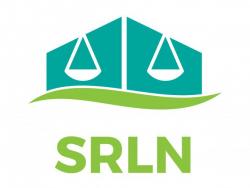
SRLN Brief: Appellate Self-Help (SRLN 2015)
Self-help resources in appellate courts, both at the state and federal level, are becoming increasingly common. While we do not have any numbers regarding the frequency of self represented litigant (SRL) appeals, we do know that there is a demand for appe ...
Paper: Self Represented Litigants: Self Help Programs – Making the Case to the Bench and Bar (Greacen, Hough, Ledray 2006)
John Greacen, Bonnie Hough, and Susan Ledray presented at the July 2006 National Association of Court Management meeting in Florida. They discussed 1) Reasons to have a self help program; 2) Objections to starting a self help program (and responses). Mat ...
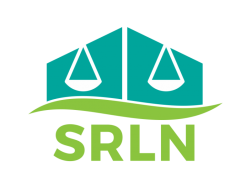
SRLN Brief: Communications Resources (SRLN 2015)
A communications strategy, which is central to any project's success, not only charts communications with internal and external customers, but also serves as an important driver for the metrics collected to measure success. Voices for Civil Justice h ...

Tool: CA Self-Help Centers' Self-Assessment Tool for Quality Programs (CA Courts 2018)
The California Self-Help Centers’ Self-Assessment Tool for Quality Programs was developed as a strategic and tactical planning template to promote quality Self-Help Center Programs across California. The tool is designed to connect a wide range of initiat ...
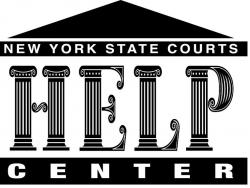
Report: Delivering Cost Effective Legal Services and Information in Challenging Economic Times (New York Courts 2015)
The New York State Courts Access to Justice Program’s 2015 Report, entitled, Delivering Cost Effective Legal Services and Information in Challenging Economic Times was released January 2016 and can be found at https://www.nycourts.gov/LegacyPDFS/ip/nya2j ...
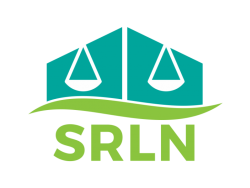
SRLN Brief: Examples of Legal Aid On-Line Intake and Triage Projects (SRLN 2016)
Over the years, legal aid programs developed complex intake protocols and decision trees to help manage their crushing caseload. Initially, these screening tools were simply paper documents that intake staff could use. Then, as telephone hotlines develope ...
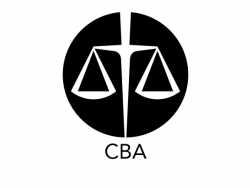
Report: Access to Justice Metrics Informed by the Voices of Marginalized Community Members: Themes, Definitions and Recommendations Arising from Community Consultations (Canadian Bar Association 2013)
The Canadian Bar Association’s Access to Justice Committee’s Building Block #1 Access to Justice Metrics sought to develop a practical definition of access to justice and to identify tangible indicators and goals to measure progress. The Committee resolve ...
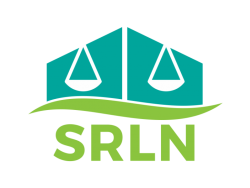
SRLN Brief: Plain Language Resources for 100% Access (SRLN 2015)
What is plain language? As described by the federal government on plainlanguage.gov, plain language is communication your audience can understand the first time they read or hear it. Plain language is recognized as an essential best practice in all access ...